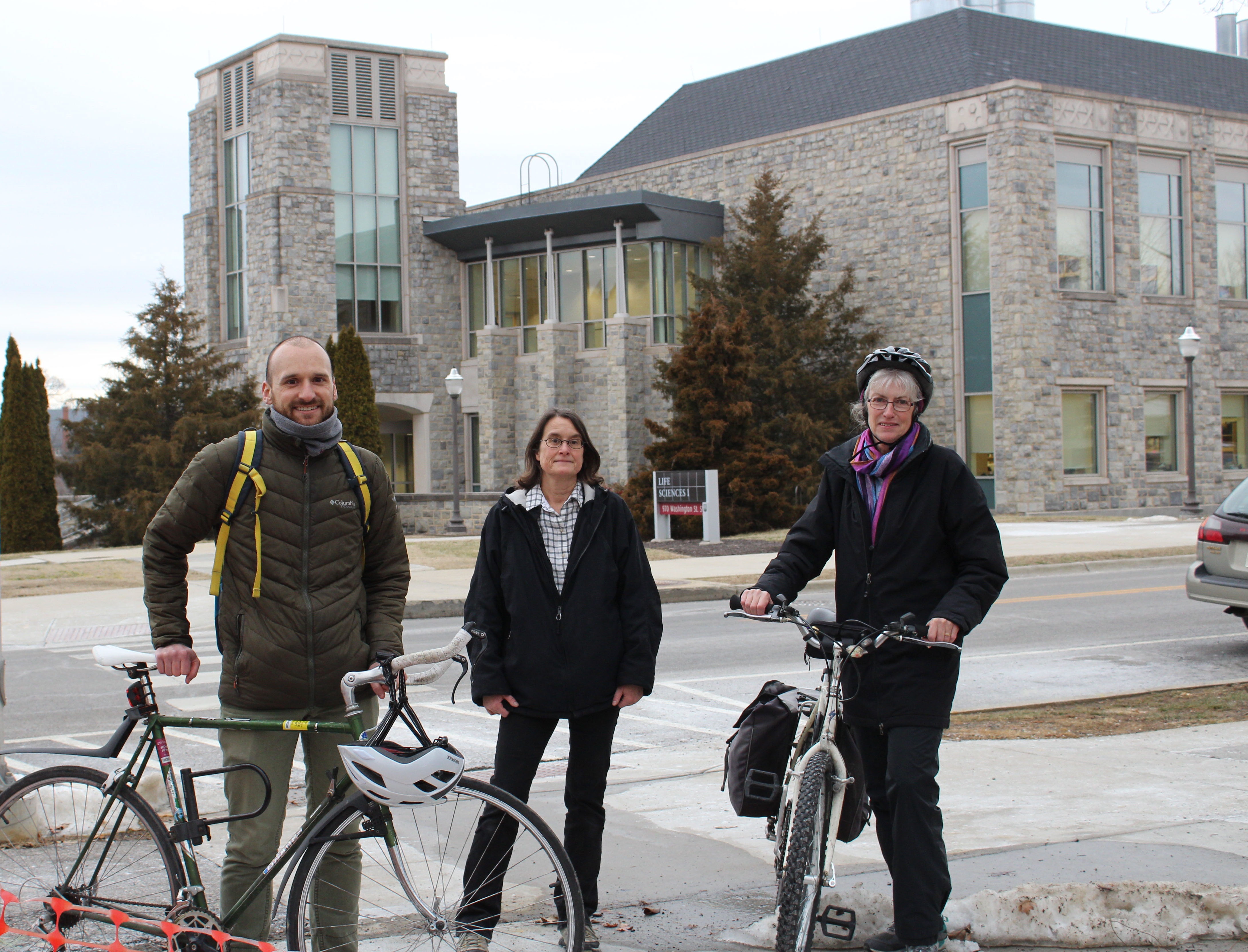New covered bike racks are coming to the Blacksburg campus

To encourage the use of alternative transportation on the Virginia Tech Blacksburg campus, two new bike shelters will soon be installed near the Fralin Life Sciences Institute's Steger Hall and Life Sciences 1 buildings.
The first will debut along Washington Street near the Hahn Horticulture Garden, with a tentative completion date at the end of February. Each rack will have eight loops to accommodate 16 bikes.
“The project all goes back to Goal 9 of Virginia Tech’s 2020 Climate Action Commitment, which is reducing single-occupancy vehicle commuting to the Blacksburg campus by 20 percent by 2025 and reducing transportation-related GHG emissions by 40 percent by 2030,” said Nick Quint, transportation network manager and interim fleet services manager.
Professor of biological sciences Brenda Winkel explained that the covered bike racks came about as she was looking around campus considering how movement between the buildings of the Fralin Sciences Institute could be improved. The issue was brought up again by students to Birgit Scharf, principal scientist of Life Sciences 1 at the Fralin Life Sciences Institute.
“I was approached by several people in my building who are riding bikes to have a covered bike rack because — if there was bad weather coming — they brought their bicycles into the labs, which is just not ideal. They also wanted expanded racks because with classes being taught in the building, there was not enough space for the researchers to use the bike rack,” said Scharf, professor of biological sciences in the College of Science.
The covered bike racks are being funded by the Fralin Life Sciences Institute, two $8,000 grants through the Green RFP Program, and a $4,000 contribution from the Virginia Tech Alternative Transportation Department. Expert guidance for the project has been provided from the outset by Michael Dunn and the Office of University Planning.
Along with the new bike rack shelters, the Green RFP Program has been a catalyst in advancing sustainability on the Blacksburg campus. Since 2011, the Green RFP program has funded over $1.5 million in student-generated sustainability projects. This includes the installation of water bottle refill stations throughout campus, the enhancement of alternative waste and recycling infrastructure, the Stroubles Creek restoration project, and many more projects.
“The project has actually funded the planting of thousands and thousands of trees along Stroubles Creek to restore the watershed from all the impacts of erosion over the years,” said Nathan King, campus sustainability manager.
The Green RFP Program accepts student and student organizations’ sustainability proposals each year. “The RFP stands for 'request for proposals.' What happens each year is in the fall, Facilities sends out a memorandum to campus… saying please submit your sustainability proposals to our office,” King said. “Any student or student organization on campus can take our proposal form and decide on a sustainability project that they'd like to implement; it’s quite simple.”
The covered bike racks began as a conversation about alternative transportation and have come to fruition to impact campus in a number of ways. This initiative supports ongoing implementation efforts of the Climate Action Commitment which provides a Virginia Tech-specific, actionable framework for advancing sustainability and energy efficiency in campus operations, academics, research, and more. The bike shelters will encourage alternative transportation as outlined in the Climate Action Commitment, and the promotion of student involvement for a sustainable campus through the Green RFP program.
“We’re sending a very visible message that Virginia Tech promotes alternative transportation, and bike riding is one of those things that is really doable in Blacksburg,” said Winkel, principal scientist of the Steger Hall building at the Fralin Life Sciences Institute. “It also says, here's this lovely place for you to put your bike when you travel to and around campus; even on rainy days, it's so much better on a bike.”
Resources
Written by Grace Hobson




